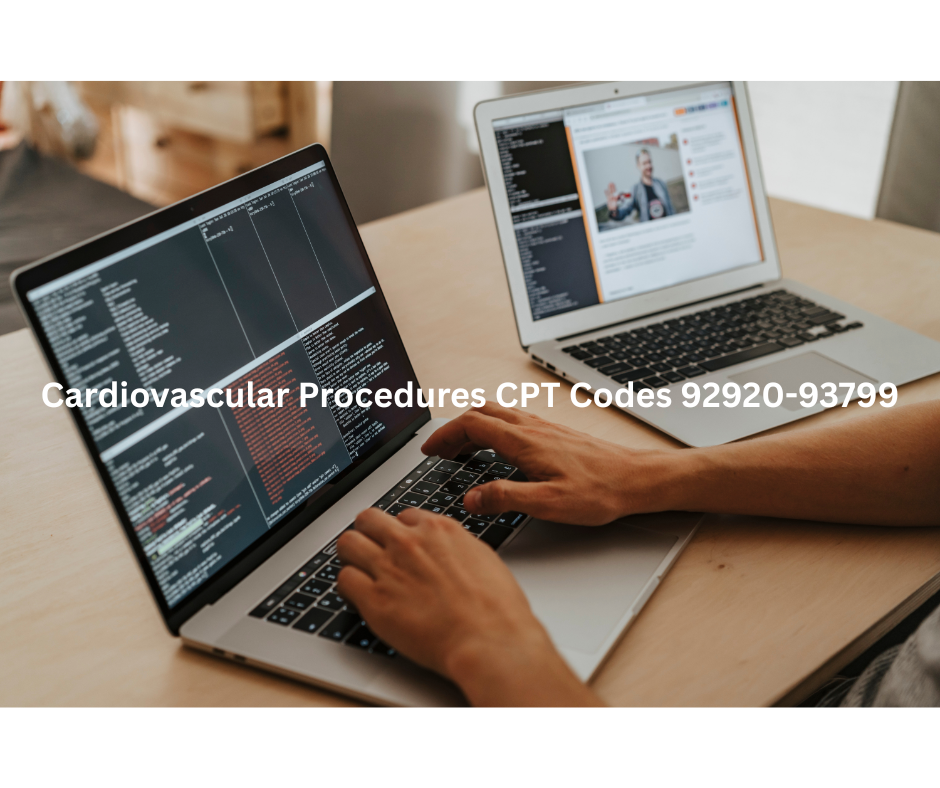Subtotal $0.00
Introduction
Cardiology is one of the most complex specialties in medicine—not just clinically, but financially. From diagnostic tests to interventional procedures, every service provided by a cardiologist must be carefully documented and coded for accurate reimbursement. That’s where cardiology CPT codes (92920–93799) come in.
This guide walks you through the essentials of cardiology coding, why it matters, and how outsourcing to a trusted partner like InfiniteRCM can help ensure accuracy, compliance, and stronger revenue cycles.
What Are CPT Codes in Cardiology?
CPT (Current Procedural Terminology) codes are five-digit numbers used to describe medical, surgical, and diagnostic services. In cardiology, these codes cover a wide range of procedures—from heart catheterizations to cardiac stress testing.
Correct coding is critical because:
- It ensures cardiologists receive proper reimbursement.
- It supports compliance with payer and government regulations.
- It minimizes claim denials and billing delays.
- It provides valuable data for clinical and operational analysis.
Why the 92920–93799 Range Matters
The 92920–93799 CPT code range is specifically assigned to cardiology procedures and services. It includes:
- 92920–92998: Coronary procedures, such as angioplasty and stent placement.
- 93000–93050: Electrocardiographic (ECG/EKG) procedures.
- 93224–93272: Ambulatory cardiac monitoring and Holter monitoring.
- 93303–93352: Echocardiography services.
- 93503–93583: Cardiac catheterization procedures.
- 93600–93662: Electrophysiologic studies.
- 93701–93799: Miscellaneous cardiovascular monitoring and management codes.
Together, this range represents the backbone of cardiac procedure coding—and each code requires precise use to avoid costly errors.
Commonly Used Cardiology CPT Codes
While the full list is extensive, here are some of the most commonly used cardiology CPT codes:
- 92920 – Percutaneous transluminal coronary angioplasty (PTCA), single vessel
- 92928 – Percutaneous coronary stent placement, single vessel
- 93000 – Routine EKG with interpretation and report
- 93306 – Transthoracic echocardiography, complete
- 93510 – Left heart catheterization, retrograde
- 93653 – Comprehensive electrophysiologic evaluation with ablation
- 93701 – Bioimpedance-derived cardiac output measurement
Each code requires correct modifiers, documentation, and linkage to the appropriate diagnosis codes (ICD-10) to ensure full reimbursement.
Challenges in Cardiology Billing and Coding
Cardiology billing is notoriously complex. Here’s why:
- High Procedure Volume – Cardiologists often perform multiple procedures in one encounter, requiring detailed coding.
- Bundling & Unbundling Rules – Some services are bundled into one code, while others require separate coding—mistakes here can trigger denials.
- Constant Updates – CPT codes and payer guidelines change frequently, requiring ongoing education.
- Prior Authorizations – Many cardiac procedures require pre-approval from insurers.
- Denial Management – Even minor errors can lead to denied or underpaid claims.
Without expert coding, practices risk losing significant revenue.
Best Practices for Accurate Cardiology Coding
To minimize errors and maximize reimbursements, cardiology practices should:
- Stay Current on Code Updates – Annual CPT revisions impact cardiology more than most specialties.
- Document Thoroughly – Detailed clinical notes help coders assign the most accurate codes.
- Use Modifiers Correctly – Modifiers such as -26 (professional component) and -TC (technical component) are critical in cardiology.
- Audit Regularly – Internal or external audits catch errors before payers do.
- Leverage Certified Coders – Cardiology-trained coders ensure compliance and accuracy.
The Role of Revenue Cycle Management in Cardiology
Revenue Cycle Management (RCM) goes beyond coding—it encompasses the entire financial process, from patient scheduling to final payment. In cardiology, effective RCM:
- Improves claim acceptance rates by reducing coding errors.
- Ensures faster payments through clean claim submission.
- Strengthens compliance with payer and government regulations.
- Enhances cash flow so practices can invest more in patient care.
That’s why many cardiology practices turn to outsourced medical billing and coding services like InfiniteRCM.
Why Outsource Cardiology Billing to InfiniteRCM?
Cardiology practices in the United States and Canada face increasing administrative burdens. By outsourcing billing and coding, they can focus on patient care while experts handle the complexities of reimbursement.
InfiniteRCM offers:
- Certified cardiology billing and coding specialists
- Expertise across the entire 92920–93799 CPT code range
- Advanced denial management strategies
- HIPAA-compliant, secure processes
- Customized solutions for small practices and large groups alike
- 24/7 support and transparent reporting
With InfiniteRCM, practices not only reduce claim denials but also increase collections and streamline revenue cycles.
Ready to improve your cardiology billing? Explore InfiniteRCM’s services.
Future Trends in Cardiology Coding
Like the rest of healthcare, cardiology billing is evolving. Some trends to watch include:
- Automation & AI: Reducing manual coding errors.
- Telecardiology: Growing demand for remote monitoring codes.
- Value-Based Care: Shifting focus from procedure volume to outcomes.
- Remote Work: More certified coders available for outsourced services.
Practices that adapt early will see smoother financial operations and better patient care.
Frequently Asked Questions (FAQs)
1. What is the 92920 CPT code used for?
The 92920 CPT code is used for percutaneous transluminal coronary angioplasty (PTCA), performed on a single coronary vessel.
2. What CPT codes fall under cardiology?
Cardiology codes range from 92920–93799, covering procedures like angioplasty, catheterization, EKGs, echocardiograms, electrophysiology, and monitoring.
3. Why is cardiology billing so complex?
Cardiologists perform multiple, high-value procedures that often overlap, requiring careful documentation, correct use of modifiers, and compliance with payer rules.
4. Can outsourced billing improve cardiology reimbursements?
Yes. Partnering with experts like InfiniteRCM ensures clean claims, reduces denials, and optimizes collections.
5. How often do cardiology CPT codes change?
CPT codes are updated annually by the AMA. Cardiology is among the specialties most impacted by these updates.
Conclusion
Cardiology coding isn’t just about assigning numbers—it’s about ensuring cardiologists are fairly reimbursed for the life-saving work they perform. The 92920–93799 CPT code range is at the heart of this process, and accuracy is critical for compliance and revenue.
By partnering with InfiniteRCM, cardiology practices across the United States and Canada gain access to certified billing experts, advanced technology, and a trusted team dedicated to strengthening their revenue cycle.
Take the stress out of cardiology billing. Get started with InfiniteRCM today.






